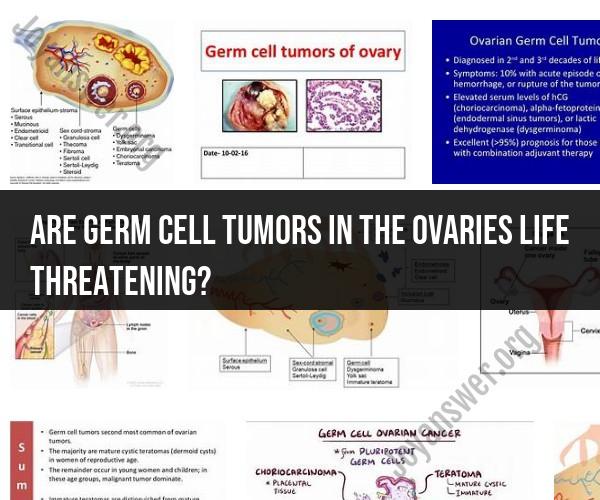Are germ cell tumors in the ovaries life threatening?
Germ cell tumors in the ovaries can vary widely in terms of their behavior and potential for being life-threatening. The threat level associated with these tumors depends on several factors, including the type of tumor, its stage at the time of diagnosis, and the individual patient's overall health.
Here are some key points to consider:
Type of Tumor: Ovarian germ cell tumors are categorized into different subtypes, including benign (non-cancerous) and malignant (cancerous) varieties. Benign tumors are generally not life-threatening, while malignant tumors have the potential to be cancerous and can be more serious.
Malignant Germ Cell Tumors: Malignant ovarian germ cell tumors have the potential to be cancerous and may spread to other parts of the body if not treated promptly. However, the prognosis varies depending on factors such as the tumor's histology (cell type), stage, and grade.
Stage of the Tumor: The stage at which the tumor is diagnosed plays a significant role in determining its threat level. Early-stage tumors confined to the ovaries (Stage I) generally have a better prognosis and are often curable with surgery and, in some cases, chemotherapy. Advanced-stage tumors (Stage III or IV) may be more challenging to treat and carry a higher risk of recurrence.
Treatment Options: Treatment for ovarian germ cell tumors typically includes surgery to remove the tumor (and affected ovaries, if necessary) and, in some cases, chemotherapy. The choice of treatment depends on the tumor's type and stage.
Patient's Overall Health: The patient's overall health and ability to tolerate treatment can influence the threat level of ovarian germ cell tumors. Younger, healthier patients may have a better response to treatment and a more favorable prognosis.
Follow-Up Care: Regular follow-up care and monitoring are essential for patients with ovarian germ cell tumors, even after successful treatment. This helps detect any potential recurrence or complications early.
It's important to note that many ovarian germ cell tumors are discovered at an early stage, often during routine gynecological examinations or imaging studies. Early detection and prompt treatment can significantly improve outcomes.
If you or someone you know has been diagnosed with an ovarian germ cell tumor, it's essential to consult with a healthcare provider specializing in gynecologic oncology. They can provide a personalized assessment of the specific tumor, discuss treatment options, and provide guidance on managing the condition. The prognosis and threat level can vary widely from one case to another, and a healthcare professional can provide the most accurate information based on the individual circumstances.












